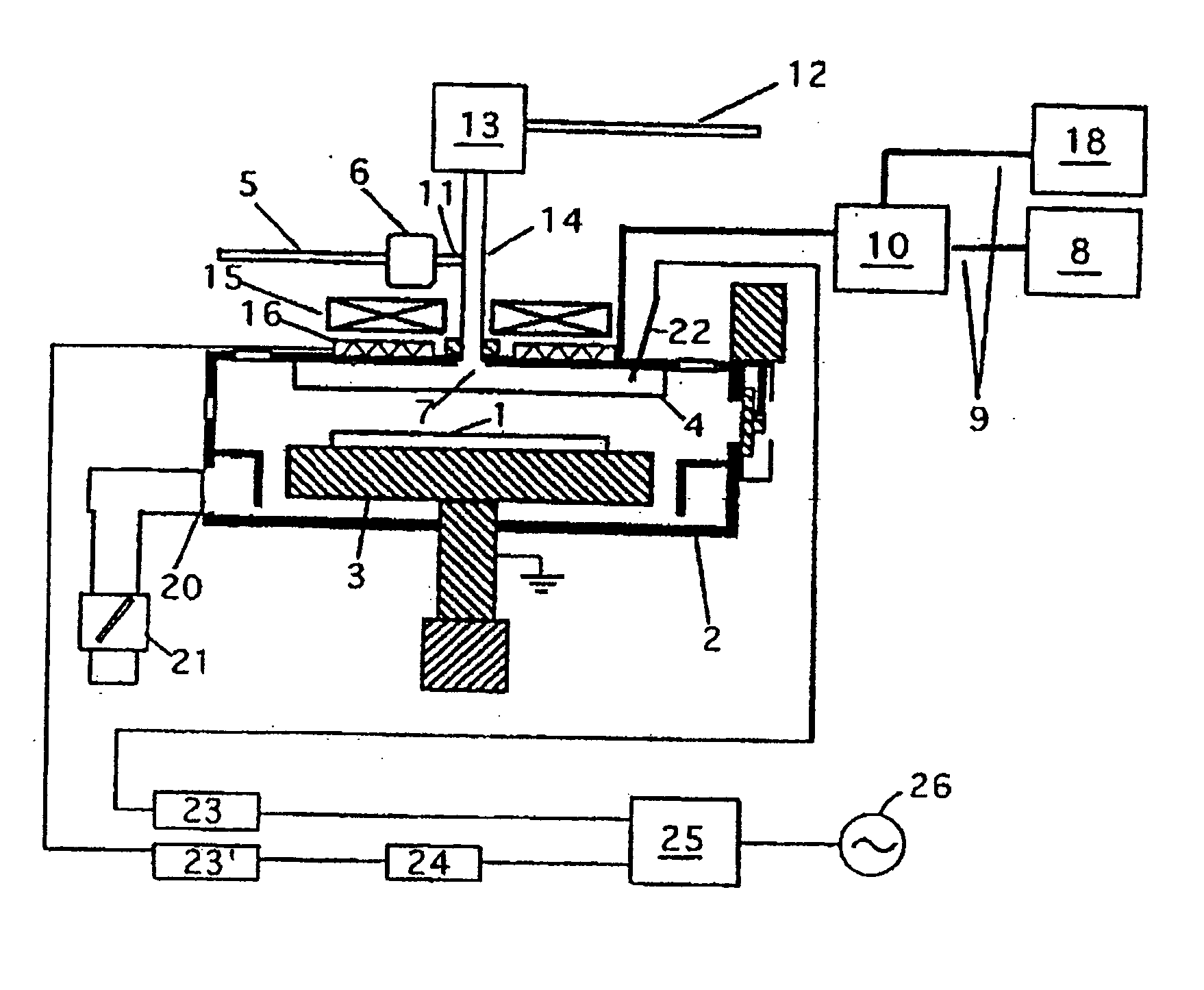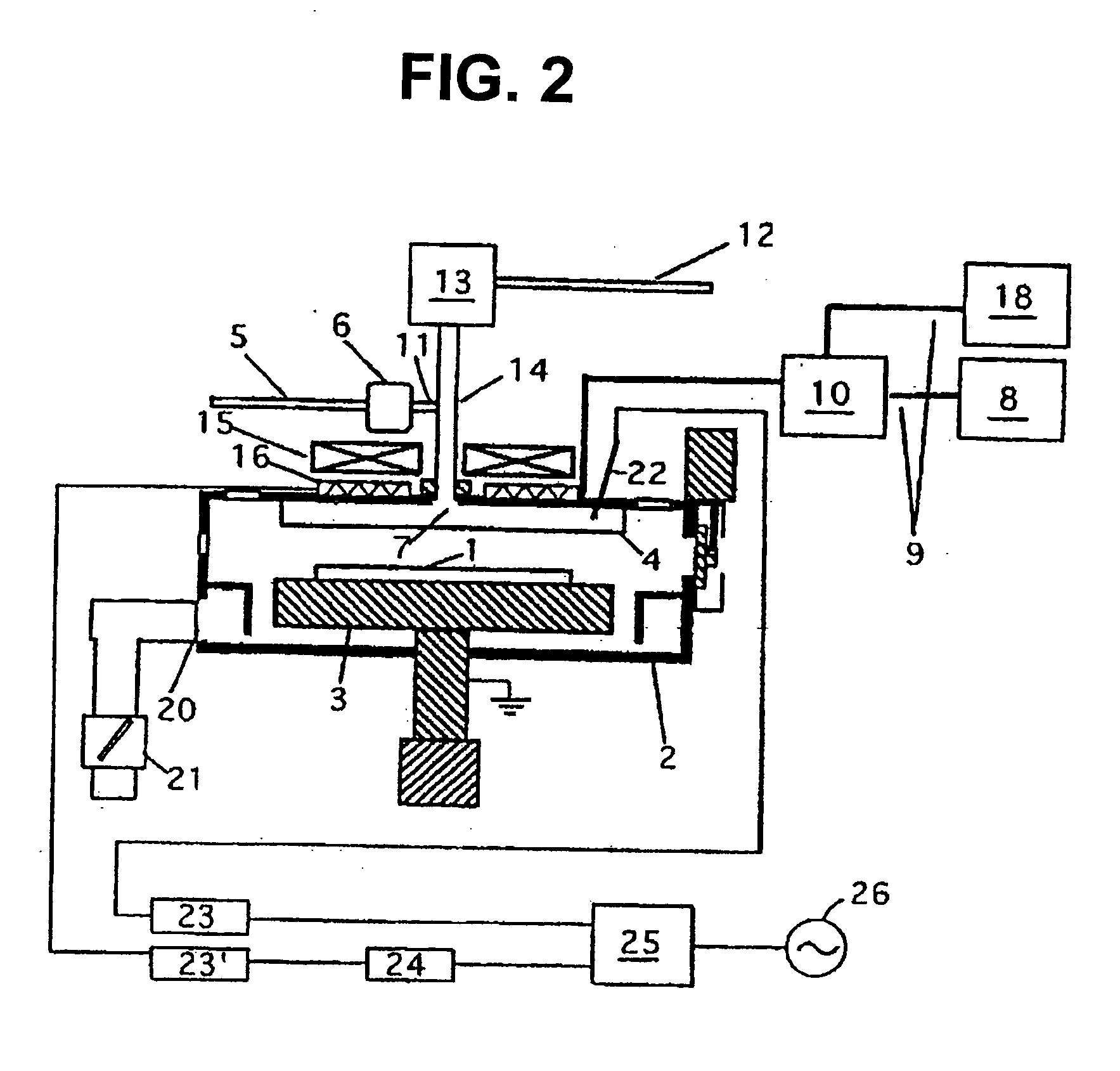Self-cleaning method for plasma CVD apparatus
a self-cleaning and plasma technology, applied in chemical vapor deposition coatings, electric discharge tubes, coatings, etc., can solve the problems of unwanted by-products (, aluminum fluoride, etc., and achieve the effect of improving operability and reducing reaction spa
- Summary
- Abstract
- Description
- Claims
- Application Information
AI Technical Summary
Benefits of technology
Problems solved by technology
Method used
Image
Examples
embodiment 2
Description of Embodiment 2 According to the Present Invention
[0087]FIG. 6 shows Embodiment 2 of the capacitive coupled plasma CVD apparatus for conducting self cleaning according to the present invention. This apparatus is a capacitive coupled plasma CVD apparatus for conducting remote plasma cleaning to process 300 mm substrates.
[0088] Inside a reactor, a susceptor 603 for placing an object-to-be-processed 601 such as glass or silicon substrates on it is set up. The susceptor 603 comprises preferably ceramic or aluminum alloy, inside which a resistance-heating heater is embedded. The susceptor 603 is also used as a lower electrode for generating a plasma. In this embodiment, the susceptor 603 has a diameter of 325 mm and an area 1.17 times larger than that of an object-to-be-processed 601 with a diameter of Ø300 mm. Within the range of 1.08 to 1.38 times, a susceptor of a different diameter can be used. A showerhead 604 for emitting reaction gases equally to the object-to-be-proc...
embodiment
[0099] Using a conventional capacitive coupled plasma CVD apparatus shown in FIG. 1 and the capacitive coupled plasma CVD apparatus in Embodiment 2 according to the present invention shown in FIG. 6, comparative experiments of deposition rates, film thickness non-uniformity, cleaning rates, and cleaning cycle under conditions described below were conducted.
(1) Deposition Conditions:
[0100] Deposition conditions for the conventional capacitive coupled plasma CVD apparatus shown in FIG. 1 were: a TEOS flow of 250 sccm, an O2 flow of 2.3 slm, a distance between upper and lower electrodes of 10 mm, a showerhead diameter of 0350 mm, a lower electrode diameter of Ø350 mm, a chamber pressure of 400 Pa, a showerhead temperature of 150° C., a susceptor temperature of 400° C., a reaction chamber inner wall temperature of 140° C., a radio-frequency power (13.56 MHz) at 600 W and radio-frequency power (430 kHz) at 400 W. Under these deposition conditions, deposition of a plasma silicon oxide ...
PUM
| Property | Measurement | Unit |
|---|---|---|
| temperature | aaaaa | aaaaa |
| temperature | aaaaa | aaaaa |
| thickness | aaaaa | aaaaa |
Abstract
Description
Claims
Application Information
 Login to View More
Login to View More - R&D
- Intellectual Property
- Life Sciences
- Materials
- Tech Scout
- Unparalleled Data Quality
- Higher Quality Content
- 60% Fewer Hallucinations
Browse by: Latest US Patents, China's latest patents, Technical Efficacy Thesaurus, Application Domain, Technology Topic, Popular Technical Reports.
© 2025 PatSnap. All rights reserved.Legal|Privacy policy|Modern Slavery Act Transparency Statement|Sitemap|About US| Contact US: help@patsnap.com



